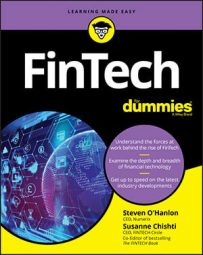 © Prostock Studio/Shutterstock.com
© Prostock Studio/Shutterstock.comAuthentication methods
Biological authentication (biometrics) is the future of authentication, with authentication methods such as facial recognition, voice recognition, retina scans, and fingerprint scans becoming ever more accurate and widely deployed:- In particular, voice biometrics represents a major step forward in eliminating passwords and making authentication more reliable and expedient for the client. To activate voice recognition, a customer must record a statement that needs to be said aloud when logging in. Consumers like it because they’re recognized more quickly, and they don’t need to answer additional security questions. Businesses like it because tech support fields fewer calls for help.
However, while banks claim that voice authentication is more secure than fingerprint reading, there are some concerns about the rapid increase in such modern technologies. Voice biometrics are accepted on the theory that each person has an inimitable voice, but the current research is still based on a relatively small sample. In addition, it’s still unsure how background noise may restrict the attributes of voice biometrics.
- Other institutions employ facial recognition technology to authenticate customers, when granting access to mobile banking apps. To set up facial recognition, the bank takes a picture of the customer as part of the onboarding process, and that picture is compared to the picture taken with the mobile device’s camera when someone tries to sign in on the device.
- Iris recognition is also common. With this technology, the device’s camera captures an image of the person’s eyes and analyzes the unique patterns inside the ring-shaped area that surrounds the pupil. Dual-factor authentication can combine facial and iris recognition by also monitoring blinks and eye movement. This additional layer of security helps counter fraud, because a video of a user wouldn’t be able to blink at the right moments.
- Fingerprint recognition is the other main biometric authentication option available. Fingerprint recognition has been around longer and is the most common means of authentication that’s used in the majority of digital devices, partly because it’s inexpensive to implement.
Apart from these biometric options, another approach to multifactor authentication is the use of device identification, where an encrypted token is sent from the device to the institution, which is then matched against the ID of the device registered at the time of enrollment.
Voice technology
Voice technology has become common in the home, with consumers now able to talk to smart fridges, thermostats, vehicles, and many other devices. Voice assistants such as Alexa, Google Home, and Siri have also changed the way people get information using mobile devices and home management systems. People are becoming increasingly comfortable talking to computers rather than humans to get things done.Voice technology is expected to soon transform the finance sector as well. Gartner Research has suggested that AI bots will control 85 percent of customer service interactions in the near future.
Many banks are looking into using voice authentication technology alongside voice-controlled virtual assistants. In such a system, consumers would be able to make a payment by talking to their smartphone app. The app would not only authenticate users by their voice but would also follow their orders to make the payment.
As machine intelligence becomes better at voice recognition and conversation, businesses are applying it in many different forms, from biometric security to helpful AI chat bots. While past technological limitations perhaps delayed consumer acceptance of these technologies, radical breakthroughs introduced over the past five years have made widespread adoption more achievable.
Voice technology usage is certain to increase in the next several years, further enriching customer experiences with digital devices. Voice recognition will become an integral part of daily transactions by bridging the gap between human and machine conversations.
Artificial intelligence
Artificial intelligence (AI) is an overall term referring to a group of computing technologies and methods to enable computers to make adaptable rational decisions in response to often unpredictable conditions. The elements of AI include natural language processing (NLP), machine learning (ML), intelligent agents, and rational decision-making. The process involves developing systems that can perform a range of basic tasks better and more efficiently that have traditionally been done by humans. AI is developing at an unprecedented rate due to developments in big data and cloud computing technologies, both of which make it easier to store vast amounts of data, and through the benefit of accessing elastic computing power.ML is effectively a subcomponent of AI but is also its natural ally. Whereas AI involves training a machine to learn from a large amount of ingested structured data using algorithms, ML then adapts its program pattern based on what it learns. For example, ML plays a major role in tools that companies use to analyze data or identify intelligent activities and their applications for organizations and management. ML is therefore one of the most common and effective approaches to achieving AI.
However, many challenges remain to complete and maintain a successful implementation. Some of these include data management (such as accessing data from unrelated sources into a common data lake), IT infrastructure, and employing the essential human talent to deploy the technology as the complexity of these techniques has noticeably increased.
In addition, the scale of applications across different client segments has seen considerable progress. Initially, machine learning was primarily used to make credit decisions in retail portfolios based on the structured data that financial institutions already had on their retail clients. Nowadays this analysis is being extended to larger corporate and wholesale sectors, where the structured data is being combined with multiple sources of unstructured data where natural language processing can be employed, including news feeds and internal and external supply-chain data. To achieve further advancements, data sets must be unified across institutions to allow more wide-ranging decisions to be made.
